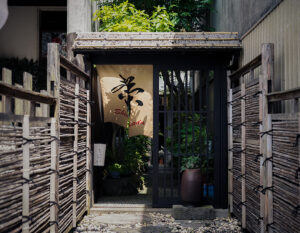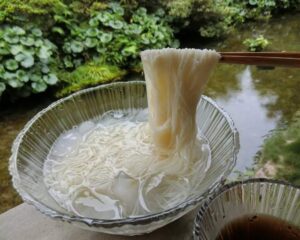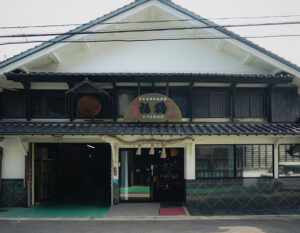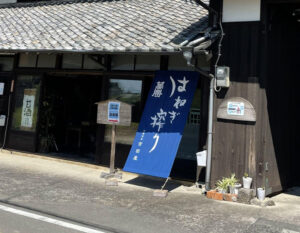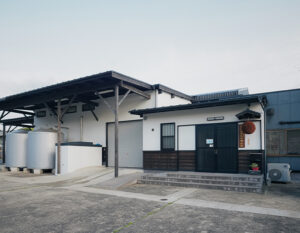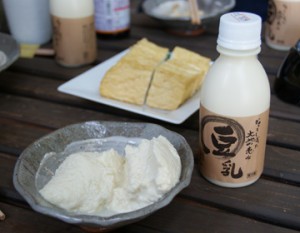Where is the production area of delicious asparagus? Iki City” may not be the first place many people would answer. In fact, however, there is an asparagus farm in Iki, a remote island in Nagasaki Prefecture, that is chosen by many food professionals, including famous restaurants nationwide. We visited Mr. Tamihito Konoi of Konomi Farm and asked him about the characteristics of Iki asparagus and the reasons for its delicious taste.
Iki Island, a production center of delicious asparagus
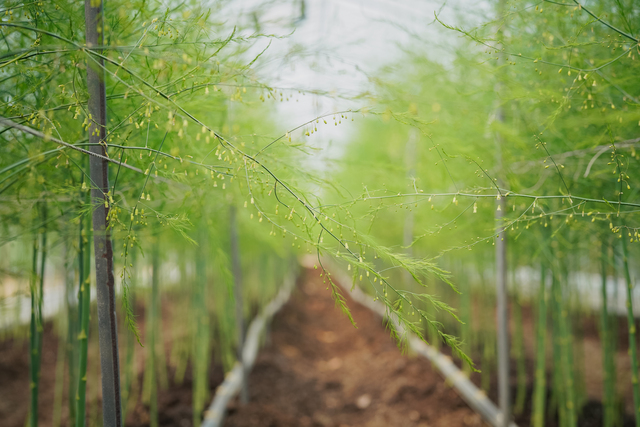
Nagasaki Prefecture has 971 islands, the largest number in Japan. Located in the northern part of the prefecture, about halfway between Kyushu and Tsushima, is the island of Iki, which appears in Japan’s oldest historical book, Kojiki (Records of Ancient Matters). The island has deep ties to mythology and is known as “the island where the gods dwell” with more than 150 shrines scattered throughout the island, making it a popular power spot with its pristine nature. Fishing and rice cultivation have thrived on the island since ancient times, thanks to its mild climate, rich sea, and fertile land, but the agricultural product that has been attracting attention in recent years is undoubtedly asparagus.
Why is Iki’s asparagus so delicious?
At the peak of the asparagus harvest, edible stalks sprout one after another around a single plant, growing 10 to 15 cm in 24 hours. To support their vigorous life force, they require large amounts of fertilizer and water, which is why they are also known as the “pigs of the field. In other words, “land with strength” is essential for high-quality asparagus, and Iki Island, with its fertile soil and abundant groundwater, is perfectly suited for growing asparagus. In recent years, various efforts have been made on the island as a whole to make asparagus a core crop, and its reputation is increasing.
The “Iki City Asparagus Project” undertaken by the entire island
One thing that is indispensable when talking about the soil of Iki is the existence of “Iki beef,” which is also known as “fantastic Wagyu beef. Iki Island, which is also famous as a production center of high-grade Wagyu calves, has many breeding and fattening farmers. The compost obtained from these farms is fully decomposed and fermented to make ” fully matured compost,” which is blended with basalt soil most suitable for vegetable cultivation, resulting in the growth of high-quality asparagus. The fact that all of the 70 or so asparagus farmers in Iki City have been certified as “Eco Farmers,” producers who practice environmentally friendly agriculture, and that they have adopted smart agriculture such as an automatic irrigation system using loT sensors are also major reasons for their brand strength. These steady efforts, accumulation of data and know-how, and incorporation of new technology have further improved the quality and reputation of Iki-produced asparagus, which also won the Japan Agricultural Grand Prize in 2011.
Konomi Farm, a healthy environmentally friendly farm
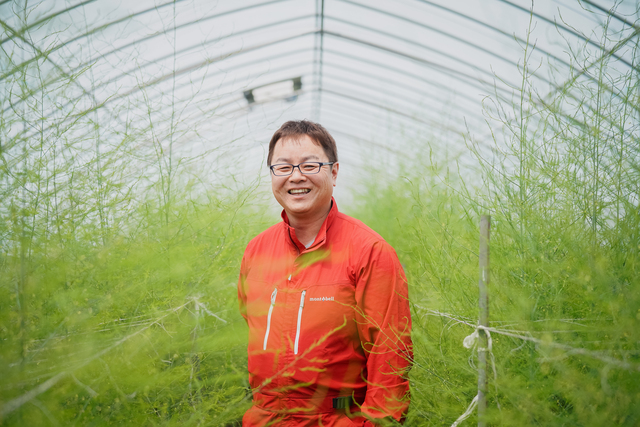
I visited Konomi Farm at the end of April. In a plastic greenhouse the size of about 12 tennis courts located along Route 382 in the center of the island, asparagus trees about 2 meters tall were neatly lined up, with small, pretty yellow flowers blooming. Mr. Tamihito Konomi, the second generation asparagus grower, welcomed us, pointing to the stalks peeking out from the sides of the plants and saying, “It is spring asparagus that we are harvesting now. His bright red work clothes, which he says he started wearing to accentuate the vivid green of the asparagus, and his smile are dazzling.
History of Konomi Farm
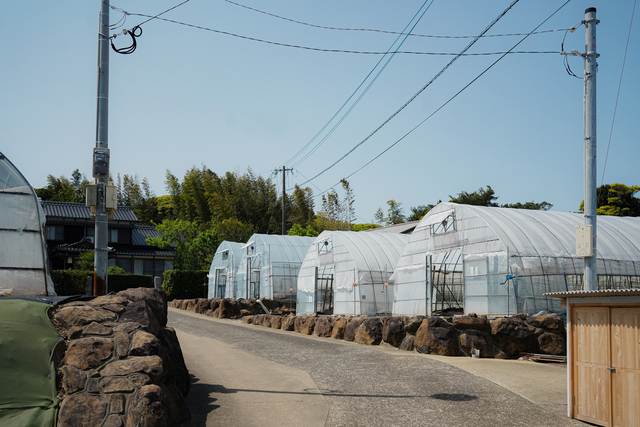
The Xuhui family, which used to be rice farmers, started asparagus cultivation in 1997, when Tamihito’s father, Seihito, took over the farm. Asparagus can be harvested with a pair of scissors without the need for large machinery such as rice transplanters or combine harvesters, and furthermore, it provides a daily income during the season. On the other hand, rice farmers harvest once a year. In light of the bitter experience of being hit by typhoons and other wind and flood damage many times in the past, which resulted in reduced harvests and poor quality, the farmers decided that it would be risky to make a living only from rice. The momentum of a government project that had just started at the time, to make asparagus the core crop of Iki Island, also encouraged him to steer his business as an asparagus farmer while growing rice. Later, he and his fellow farmers in Iki were certified as the nation’s first eco-farmers for asparagus, and he has devoted himself to environmentally friendly agriculture. Now, Mr. Tamihito is the second generation to take over the farm.
What is important is soil and water. And human eyes and hands.
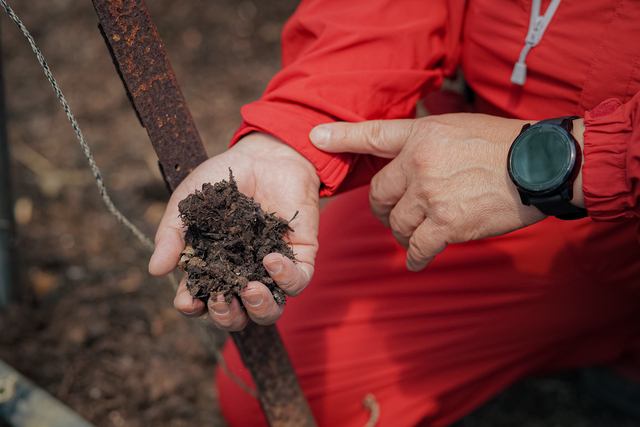
During the harvesting season from March to October, asparagus shoots sprout and grow incessantly, and the asparagus farmer kneels down and carefully cuts them one by one with scissors. Harvesting is all done by hand, and it’s physical work that takes a toll on the body because there are no breaks during the seven-month period. I am overwhelmed by the vitality of the asparagus, which grows from short in the morning until it is ready to be harvested by noon. If weeds grow, he pulls them out by hand, and for pest control, he sets up pheromone traps that do not use chemicals. He also makes it a daily routine to walk around the farm to check the growth of the plants and the condition of the soil. If the surface of the soil is dry to the touch, he covers it with matured compost made from Iki beef. If there is not enough water, even just a little, the plants lose their vigor. At our farm, we give them plenty of groundwater that tastes good even for human consumption,” smiles Mr. Xu Hi. The expression on his face conveys the care he takes for his asparagus.
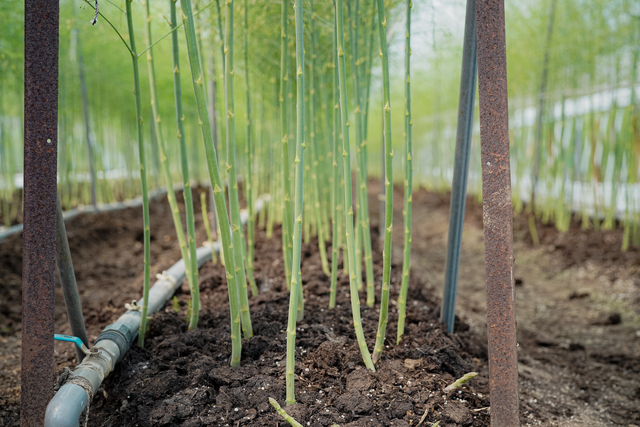
Winter maintenance is also an important job. Asparagus stops growing when the temperature drops and goes into a dormant state. In spring, when the temperature rises above 20 degrees Celsius, the asparagus wakes up from its sleep and begins to grow young stalks. When the harvest season is over and the green leaves die, the trees are cut down from the base, the farm is disinfected, and compost is added, allowing the nourished plants to rest until the next spring. Asparagus is a vegetable that cannot be harvested for three years after planting, but continues to sprout vigorously for the next 10 to 20 years. Management during the dormant period has a great impact on the quality of subsequent years.
Steady Expansion of Sales Channels
Currently, asparagus produced at Konomi Farm is used at many famous hotels and restaurants in central Tokyo and elsewhere. What Mr. Xu did to expand sales channels is quite simple. I started by visiting restaurants and chefs directly with my own feet and having them actually try the asparagus,” he said. He once traveled all the way from Iki Island to a market in Kamakura, Kanagawa Prefecture, where chefs go to buy asparagus to sell to a two-star Michelin restaurant in Ginza, Tokyo, that wanted to use Konomi Farm’s asparagus. The taste, endorsed by top food professionals, was introduced from chef to chef, and now the asparagus is well-known among those in the know. His steady efforts have borne fruit.
Delicious raw asparagus
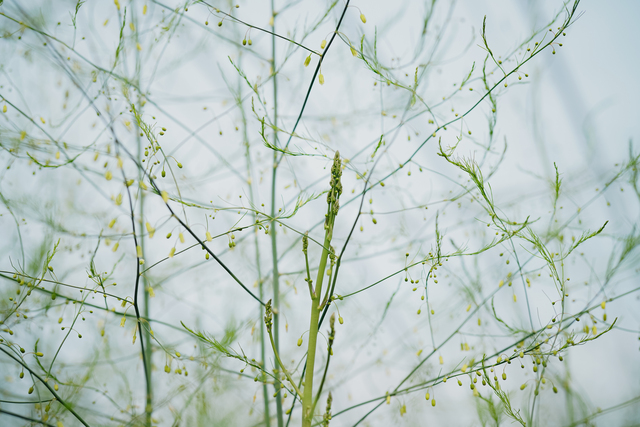
The asparagus produced at Konomi Farm has a refreshing sweetness and is juicy to the bite. When eaten raw, the supple skin pops open and the crispy texture is accompanied by a gentle sweetness and aroma. When cooked, the taste becomes richer and the aroma more pronounced.
The season is twice a year, in spring and summer.
The spring shoots that sprout first are called “spring asparagus” and the summer shoots that emerge after the plants have rested are called “summer asparagus. While there is no major difference in taste or appearance, “I would venture to say that spring asparagus, which grows with nutrients stored during the winter, has a strong sweet aroma like young corn, while summer asparagus, which emerges in late May to early June, is bright pastel green and has a more tender texture,” says Xu Hi. When we harvest them every day, we can clearly see the moment when they change from spring buds to summer buds. It’s just a small difference,” he says. The fact that he is able to feel the minute changes on his skin is due to the fact that he has been working with his eyes and hands for seven months without a break.
Popular asparagus dishes at the Xuhui family’s table
The asparagus farmer’s recommended recipe is a bold yet simple “lightly grilled asparagus. Place the whole asparagus on a preheated grill over high heat for 3 minutes, and grill until the surface is charred. Sprinkle with salt to taste and you are done. The umami flavor is concentrated, and the fragrance of the surface fills the mouth.
Mr. Xuhi has some advice for those who are looking to purchase. Freshness is essential for “sprouted” vegetables such as asparagus. Check the cut end first, and choose one that is round and clear. Good shaped leaves (triangular leaves attached to the stem) are a sign that they have grown well. After purchasing, be sure to store them upright. If you store them lying down, they will become stringy and lose their flavor. If you wrap them in newspaper, secure them with rubber bands, and store them in the refrigerator, you can enjoy them for up to a week. Use this as a reference when shopping at the supermarket.
To produce more delicious asparagus
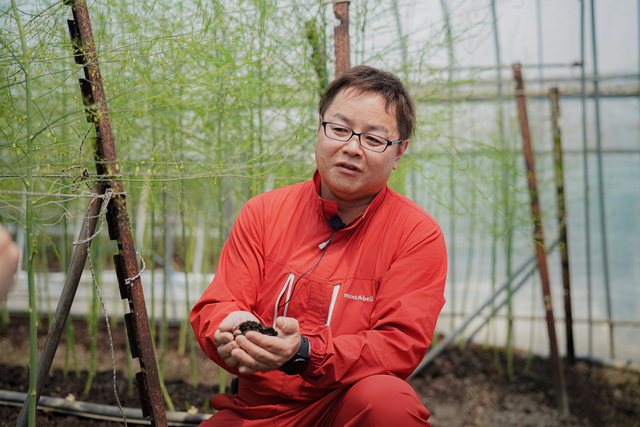
Mr. Xu is pursuing “a gentle flavor with no bitterness. He mixes enzymes with fully ripe compost to achieve a more supple texture, and repeats trial and error every day. He is constantly experimenting with new methods, such as mixing ripe compost with enzymes to achieve a more supple texture. I want to reduce the area of my land so that I can do even more work. I want to watch the growth with my own eyes and produce even higher quality asparagus. At the same time, he aims to expand sales channels to the Asian market, taking advantage of Iki Island’s image and geographical advantage. In this day and age, fish from Kyushu landed in the morning is served at restaurants in Hong Kong and Shanghai by noon. Asparagus, which requires freshness, can be shipped through the same route. From Iki, the island where the gods dwell, to the mainland and the world. Mr. Xuhi’s challenge continues.




